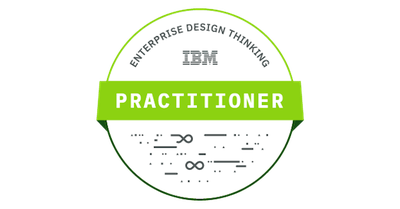The Digital Transformation of Work at UofL
The Digital Transformation of Work at UofL

Dr. Sharon Kerrick, Department Chair, Department of Educational Leadership, Evaluation and Organizational Development, College of Education and Human Development
Jerry Rabalais: Sharon, why does UofL need a Center for Digital Transformation?
Sharon Kerrick: We are all increasingly technology-dependent in our work, and technology will be the key to transforming how we work. Think of digital transformation as a process of using digital technologies to create new or modify existing business processes with the goal of transforming our customer’s experience. We must do this to remain competitive with the marketplace as an academic center whether we are trying to meet the needs of our students or the needs of patients at the Health Sciences Center.
Jerry Rabalais: I have just recently completed training related to UofL’s partnership with IBM using their Enterprise Design Thinking approach to problem-solving. How do you see design thinking playing a role for our learners, staff and faculty?
Sharon Kerrick: Design thinking is a process of creative collaboration. Innovation is the name of the game in business as well as higher education now more than ever and by utilizing design thinking we are more inclusive and collaborative. This process (design thinking) provides a tool/process to view problems through different perspectives and supports interactive problem solving, which strengthens us as a university community.
Jerry Rabalais: Can you share how you see design thinking being used at UofL?
Sharon Kerrick: Design thinking is a user-focused, structured process that acts as a social technology to help with business process and culture change. Design thinking’s structures allow for carefully planned dialogues with affected parties, extensive end-user research, and prototype trials of new solutions. These structural processes in design thinking all act to help reduce the fear and uncertainty that can paralyze change efforts as we attempt to optimize our end-user’s experience whether students or patients. We are now embedding the IBM design thinking Practitioner Badge (a two-hour commitment) into courses in the Colleges of Engineering and Education and Human Development.
Jerry: Who should consider getting this Practitioner Badge in Design Thinking?
Sharon: Everyone! Dr. Bendapudi sees badges like the Design Thinking Practitioner Badge and other micro-credentialing badges as a “value-added” benefit of studying at UofL, and feels that everyone in the UofL community should take advantage of these offerings to better serve our students, our patients and our community partners.
Jerry: I wanted you to know that we are just now incorporating the IBM design thinking Practitioner Badge requirement into our faculty leadership training program, Leadership and Innovation in Academic Medicine, and our new medical student elective in leadership, Student Leadership and Innovation in Medicine. These groups function in small teams that use design thinking to surface and recommend solutions to problems around education and patient care currently facing the Health Sciences Center.
Sharon: Thanks for letting me know that. I am delighted that you are using the available IBM training to compliment these leadership training programs.
Jerry: You mentioned micro-credentialing badges other than those available from IBM. Can you tell me more about those?
Sharon: We put together a website https://louisville.edu/digital-transformation/home/learn to serve as a Digital Transformation Umbrella, a site that houses all currently-available badges not only from IBM, but from Google, Microsoft and other companies to facilitate access by our students, staff and faculty. There are over 1700 various badges available and the site helps you to select and curate which badges are most relevant to your work and career plan. The goal is to arm the UofL community for lifelong learning in technology.
Jerry: Sharon, thank you for talking with me about your efforts to help the university with transforming our work with technology, and preparing us an increasing dependence on technology to do our work in the future.
Sharon: You are most welcome. I want to encourage all your readers to visit the digital transformation website and consider completing the IBM design thinking badges, and to look over the other available micro-credentialing opportunities housed there. We all must be prepared to critically review our current educational, business and patient care process to use technology to transform and optimize the end-user experience for us to remain competitive with other academic centers. In addition, these micro-credentialing badges serve as a mark of accomplishment by our students and trainees distinguishing them as they enter the job market.
If you want more information about digital transformation or any of the badges or credentials that are currently available please visit the digital transformation website.
